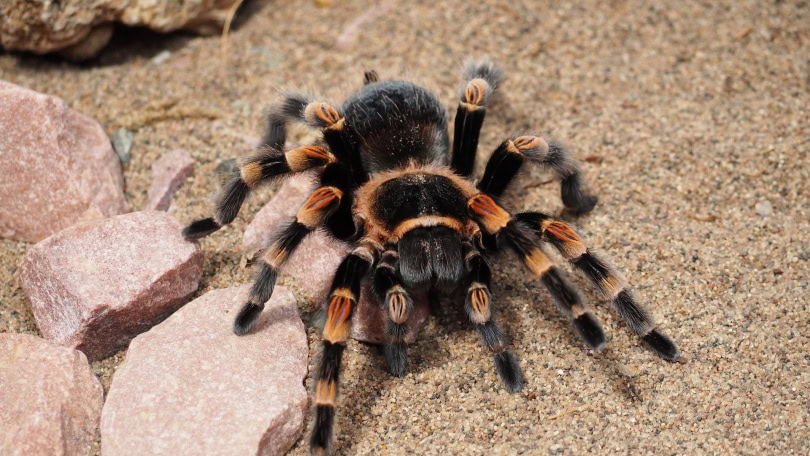Click to Skip Ahead
PangoVet advocates adopting before shopping. We understand that there are many reasons for seeking a breeder, though, so we encourage it to be done the right way. We have not personally investigated all the breeders here; rather, we have gathered their details so you can get in touch and ask all the right questions before you decide. Learn more about our position and how to choose a breeder here.
Tarantulas are fascinating exotic pets that have become increasingly popular in the U.S.A. due to their beauty, interesting features, and long lifespans. There are over 850 of these nocturnal arachnids.1 From the striking blue tarantula to the Goliath bird-eating tarantula, they all differ in appearance and personality. That means there’s an ideal species for every potential owner.
That said, you want to ensure that when you’re ready to purchase or adopt one, you are aware of the different reputable sources. This article lists a few of the best places to get a high-quality tarantula while still allowing you to choose from many species that are available.

Tarantula Breeders in the U.S.A.
Getting a tarantula from an ethical breeder is the best option if you are looking for a specimen of a specific species, size, coloration, and temperament. These breeders take pride in their collections and are willing to answer any questions that you have regarding the types of tarantulas that they have for sale.
- Fear Not Tarantulas. This breeder has a wide variety of arboreal and terrestrial tarantulas in the form of spiderlings, juveniles, sub-adults, and adult tarantulas. It is their mission to spur interest in these creatures to positively impact the tarantula community.
- Micro Wilderness. This breeder has rare new-world and old-world tarantulas for sale, with a section dedicated to female tarantulas. Their collection is large, which gives you many different species to choose from.
- Fangztv. Tom is a well-known tarantula breeder who has a large collection available for sale. Here you can find happy and healthy spiders. Tom also encourages buyers to contact him if they have any questions, and he gives expert knowledge on his tarantula’s husbandry and detailed info on his specific tarantulas.
- Swift’s Invertebrates. This is a respected dealer of tarantulas, centipedes, and scorpions. A freebie is included in your order, and there are many tarantulas to choose from on the website.
- Jamie’s Tarantulas. This tarantula breeder sells high-quality tarantulas and even includes beginner specials. Enclosures are also sold on this website, so you can purchase a good habitat at the same time that you buy your tarantula.
- Strictly Reptiles. This breeder mainly sells reptiles, but they have a hefty selection of tarantulas and spiders for sale, from spiderlings to sub-adults.
- Morph Market. The website has a wide range of tarantulas for sale from thousands of breeders worldwide.
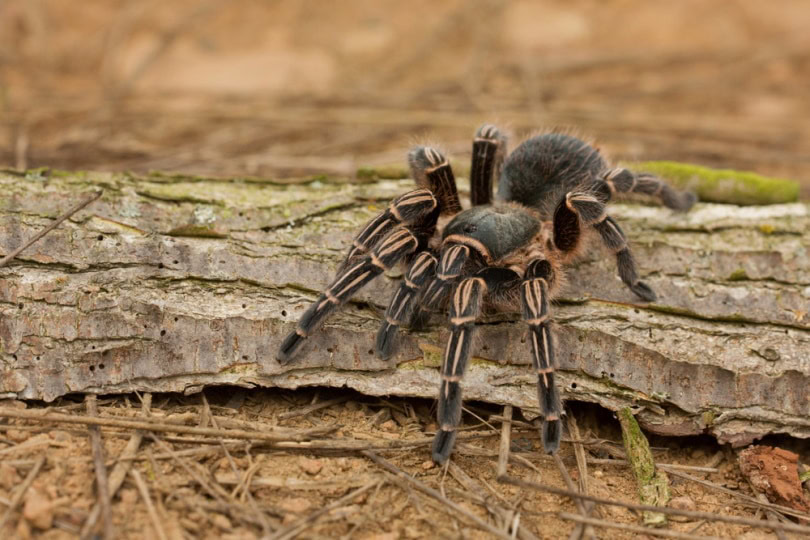
Tarantula Breeders Near Me
- Big Apple Herp – US. This breeder has a large selection of new-world tarantulas available, such as the cobalt blue, pink toe, and the Mexican red knee tarantula, to name a few.
Tarantula Breeders That Ship
- Tarantula Canada. This Canadian breeder ships to U.S.A. customers who have a U.S. fish and wildlife license. It has a huge selection of healthy tarantulas, from slings to adults of many different species.

How Much Does a Tarantula Cost?
The tarantula hobby itself may be fairly low cost in terms of maintenance and habitation, but tarantulas are not cheap themselves. You can expect the average price for a beginner tarantula to be between $60 and $100. The price range for an adult tarantula can range from $150 to $300. Some rare adult tarantulas can be priced as high as $500, especially if they are female, since they live longer. Slings and spiderlings under 1 year of age will be cheaper in comparison to juveniles and adults.

Things to Ask a Tarantula Breeder
The first and most important question to ask a tarantula breeder is the age and sex of the specific tarantula. Most hobbyists have a sex preference, mainly because males and females can differ greatly in terms of lifespan, appearance, and care. Finding out the sex of the tarantula is important because you will get a general idea of how long you can expect to have it in your care. The age should also be considered because an adult tarantula will have different care requirements than a sling or juvenile.
You should also speak to the breeder about the tarantula’s current conditions. They will typically have an ideal setup for the species in question and should be willing to provide you with picture references and details as to how the animal should be kept.
Lastly, speak to the breeder about any warranties that come with the tarantula. This can include a dead-on-arrival warranty or a warranty that enables you to swap and correct any orders that were the breeder’s fault. A refund policy may also be issued if your tarantula arrives dead and you do not want a replacement.
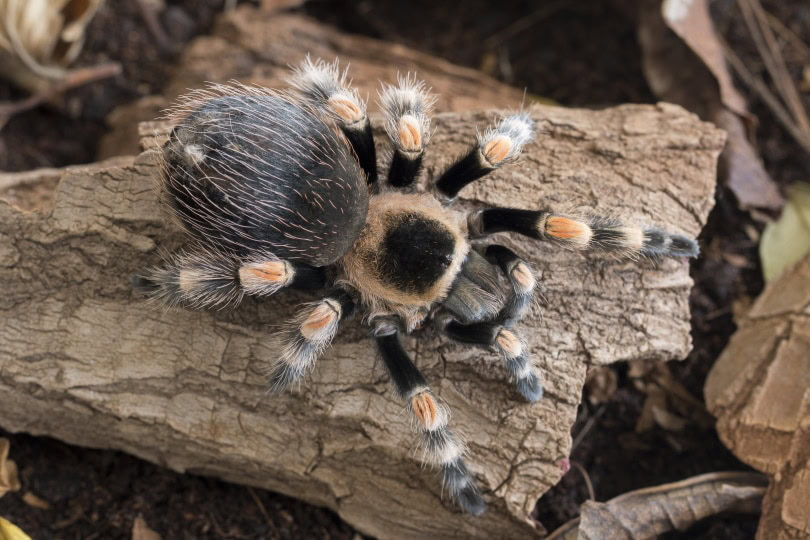

The 5 Things to Know Before Buying a Tarantula
1. Species and Size
Each species of tarantula has different care requirements. It is important to understand the individual needs of your preferred tarantula before purchasing one. Some require high humidity and temperatures, while others will die in such conditions. There is also a major difference between arboreal (climbing) and territorial (land-dwelling) tarantula habitats.
If you purchase a sling, it will require a much simpler and smaller habitat in comparison to adults or juveniles.
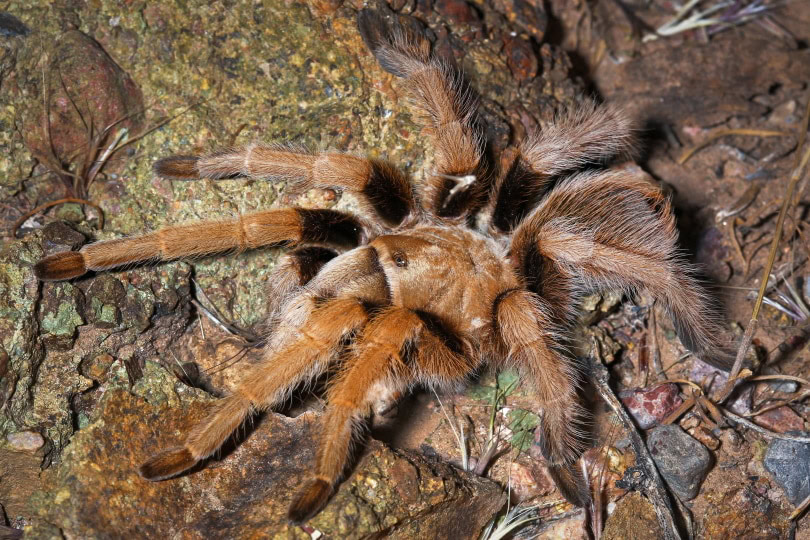
2. Sex
Female tarantulas live longer and grow much slower than males. A healthy female can reach between 15 and 20 years of age in your care, whereas males rarely live more than 6 or 7 years. This means that female tarantulas are an exceptionally long commitment, and you need to be sure that you can care for a female for nearly 2 decades.
3. Handling
Tarantulas are more observational than handling pets. Only experienced keepers should attempt to handle their tarantula. If you are looking for a cuddly and interactive pet, this spider is not right for you. Handling is more of a risk for the tarantula than you because if they were to be dropped or fall from even a short distance, their abdomen would rupture, which would result in death.
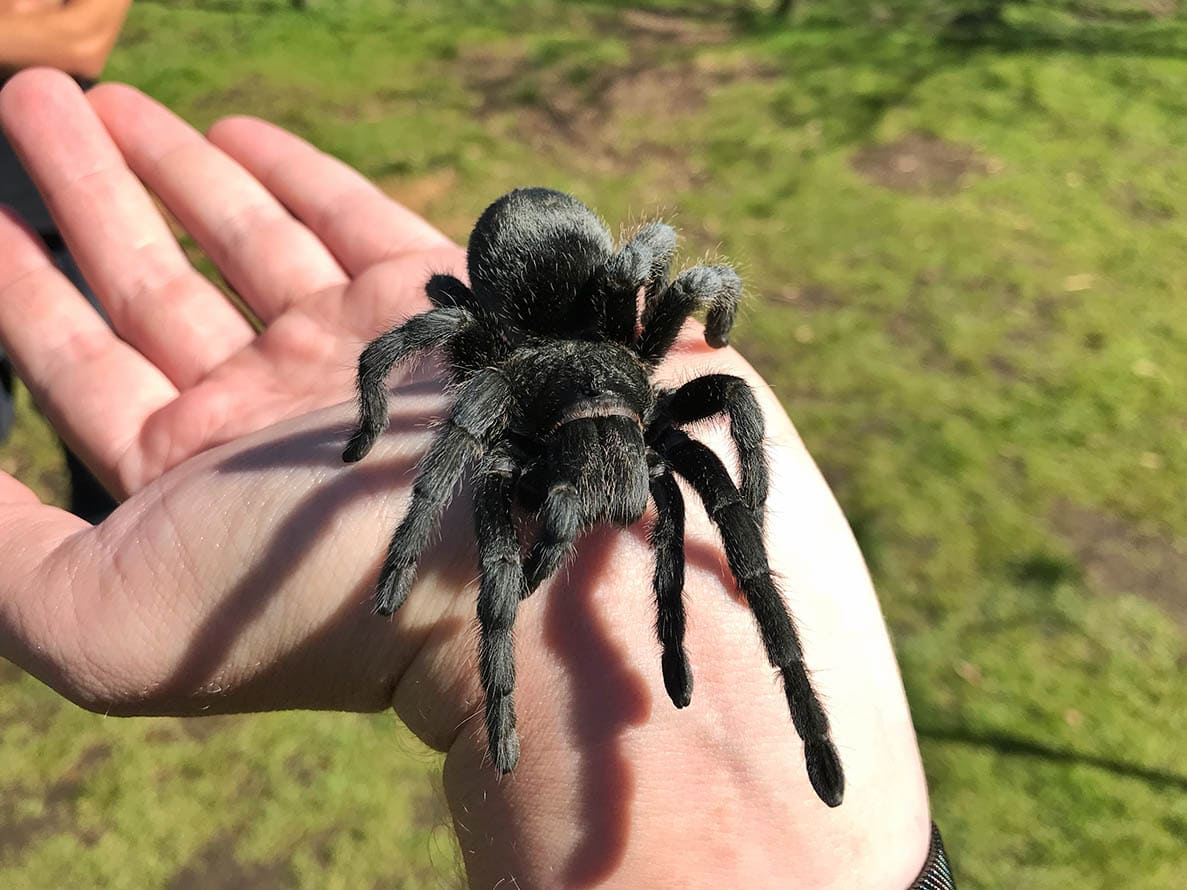
4. Habitation and Maintenance
If you choose to house your tarantula in a species-appropriate home like a critter keeper or reptile breeding box, it will be pricier than if you were to use a temporary plastic tub with holes drilled in. The species will determine the type of enclosure that your tarantula, needs and choosing the right one is essential for their survival.
That said, slings and spiderlings will need a much smaller and cheaper form of housing while they are still growing. Some keepers may find it difficult to clean their tarantula’s habitat because they are fearful of them. Keep in mind that you will also have to clean and refill the water dish multiple times a week and provide them with daily misting.
5. Diet
Tarantulas do not eat food that comes in pellet form, so you will have to feed them live foods, such as crickets, superworms, and roaches. This means buying live feeders from a pet store and housing them in a separate container. Tarantulas only eat once or every other week, so these feeders will be in your home for quite a while.

Conclusion
Tarantulas can make interesting pets for older children and adults. If you can care for it properly and do extensive research on the species you plan to keep, you should have a thriving tarantula in your care for years to come. Now that you have discovered different reputable breeders and rescues in your area, you can begin the exciting journey of purchasing your arachnid.
Featured Image Credit: Jake Heckey, Pixabay
